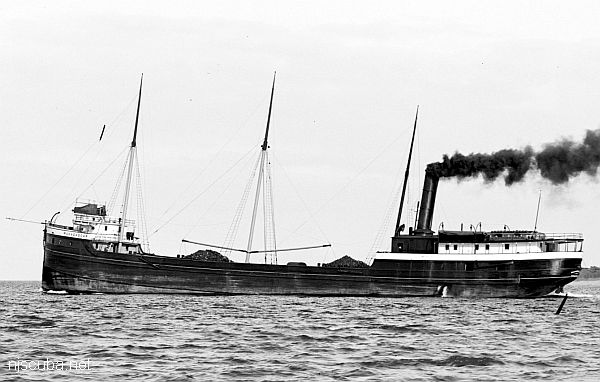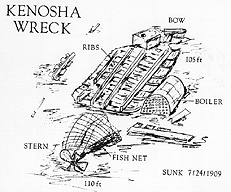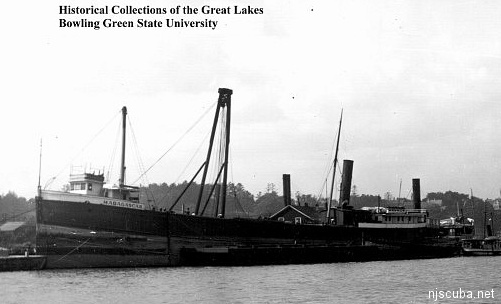Kenosha

- Type:
- shipwreck, collier, USA
- Name:
- Kenosha, the seat of Kenosha County, is a city in southeastern Wisconsin on Lake Michigan.
- Built:
- 1894, Davidson Shipbuilding, West Bay City MI USA, as Madagascar
- Specs:
- ( 244 x 37 ft ) 1677 gross tons, 12 crew
- Sunk:
- Saturday July 24, 1909
foundered in storm - no casualties - Depth:
- 100 ft
Kenosha

This wreck, which has always been known as the "Fire Island Lightship", lies in 105 feet of water, ten miles southeast of Fire Island Inlet. Until 1986 she was still a mystery to us. Although a few sources report the Lightship sinking on May 8, 1916, she really didn't. On this date, the liner Philadelphian collided with the Fire Island Lightship, which, although damaged, was towed to Staten Island where full repairs were made.

"After diving this wreck and finding a wood-hulled ship, I discovered and confirmed that this truly could not have been the steel-hulled Lightship, but a wreck given the name for its location". This was taken from the original Wreck Valley book, but we now have discovered her true identity to be that of the Kenosha.
On August 13, 1986, diver Marc Weiss surfaced with the ship's brass windlass cover which turned out to be the key to identifying the wreck. Engraved on it were the words " Madagascar, James Davidson, American Shipbuilders Company." With this information, I started to research the wreck. Although all of my usual channels of information produced nothing on a vessel named Madagascar sinking off Long Island, I eventually discovered that the Madagascar, which was a 243 foot, wood hulled inland freighter built in 1894, had changed names in 1907 to Kenosha, before foundering on July 24, 1909. At the time of her sinking, she was carrying a cargo of coal and had twelve

crew on board. It was not until October of 1989 that I was finally able to locate a topside photograph. We could see at last what this vessel had actually looked like.
The Kenosha is one of the best and my favorite lobstering wrecks in the area. Five-pound lobsters are almost commonplace, and lobsters up to 15 pounds can still be seen by divers who look deep inside her crisscrossed ribs. But just because divers can see them, it doesn't mean they can catch them. It's like sticking your hand in a cookie jar and grabbing a big handful. You can easily put your hand on a big bug, but more often than not, you can't pull your hand out of the hole with a fistful of lobster.
Excerpted from Wreck Valley CDROM by Dan Berg



Questions or Inquiries?
Just want to say Hello? Sign the .